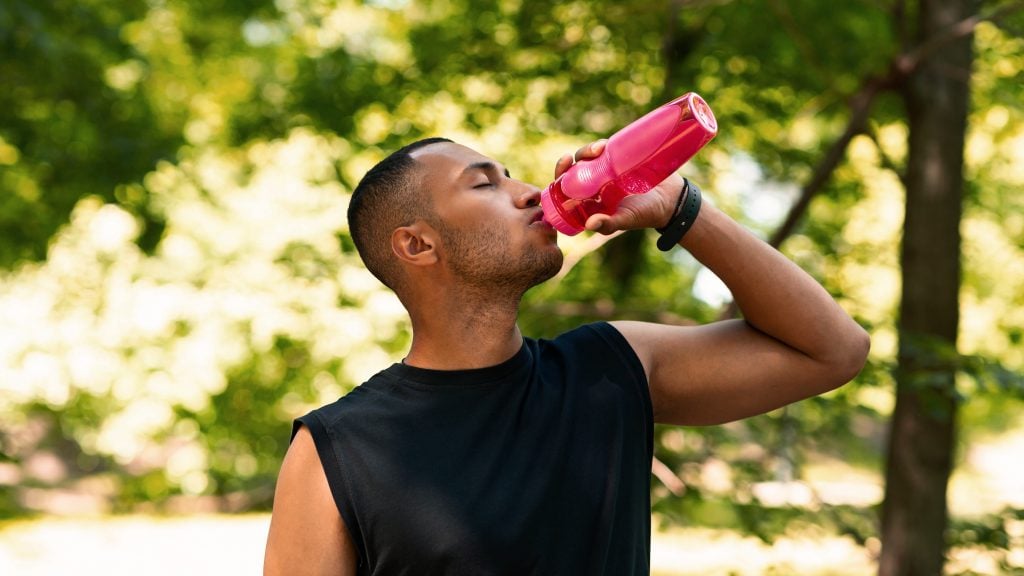Marathons are the ultimate test of human endurance. Full-length races span 26.2 miles with average finishing times ranging between 4 to 5 hours.
These long-distance races can be incredibly taxing on both your physical and mental health, therefore it’s essential that you take the race seriously and start preparing for the big day months in advance.
Crossing the finish line on the day of your marathon should be one of the most rewarding moments of your life.
However, if you refuse to train for the event, it could also become one of your most unpleasant experiences.
Of course, most marathon runners complete their race free from harm, but this is still a possibility you must account for. Let’s take a closer look at the dangers of running a marathon without training.
Running a marathon without training is not a trend
Depending on your internet habits, you might have seen the recent surge in marathon training tips, and marathon running journeys, taking off on apps such as Instagram and TikTok. If so, you may have also seen a handful of influencers claiming to have run marathons without any training. You might be thinking, “that’s crazy!”, and you’d be right, it is crazy, and it’s not something that any athlete, running-enthusiast, or fitness coach would ever recommend doing.
As an influencer, it’s arguably quite dangerous and irresponsible to promote running a marathon without training to an audience who might be impressionable and less physically fit/experienced than you.
It’s great that more people are becoming interested in marathons, whether it’s to achieve fitness goals, reap the mental health benefits of perseverance, or even just to brag about it to their mates at the pub. However, big achievements like marathons shouldn’t be treated as a quick-win. Like any sport, running a marathon requires self-discipline and adequate fitness, which is an important part of the overall experience, and can only be achieved through the right training.
Here are the top reasons you should not do a marathon without training.
Sustaining an injury
The most significant danger of running a marathon without training much is that you could sustain an injury. One of the most common marathon-related minor injuries is known as plantar fasciitis.
If you run long distances without the proper marathon training or sufficient rest days in between, your feet can experience immense pressure which in turn weakens the ligament’s ability to absorb shock.
Other common running injuries include:
- Runner's Knee occurs when the cartilage under your kneecap gets irritated, causing pain around the front of your knee. It's often due to overuse or poor running mechanics.
- Shin Splints are best described as sharp pains along the inside of your shin-bone. Usually, they're caused by repetitive stress on your shin-bone, and the tissues attaching your muscles to the bone.
- Achilles Tendinitis: your Achilles tendon is a tough band of tissue that connects your calf muscles to your heel bone. When it gets irritated or inflamed, typically from overuse or sudden increases in training intensity, you've got Achilles tendinitis. It can make heel-to-toe motions especially uncomfortable.
If you do happen to develop plantar fasciitis or any other kind of common foot injury, such as a sprained ankle, remember to take it easy and give your body plenty of rest. Investing in sports insoles will add an extra layer of support in protecting against these problems.
Exhausting your body
It’s important that you slowly build up your cardiovascular fitness to a level that will allow you to compete without exhaustion — also known as, building stamina.
Stamina isn't just about having strong legs and a healthy heart—it's a complex interplay of physiological adaptations, energy systems, biomechanics, and mental fortitude that come together to keep you pounding the pavement mile after mile.
- Your heart, lungs, and blood vessels play a starring role in marathon running, as your heart pumps oxygen-rich blood to your muscles, while your lungs work overtime to take in oxygen and expel carbon dioxide. Regular marathon training strengthens these systems, improving their efficiency and your stamina over time.
- Muscular endurance is your muscles' ability to keep contracting over a prolonged period without fatigue. Training gradually increases your muscle strength and endurance, allowing you to run longer distances without feeling like your legs are turning to jelly.
- Your body relies on different energy systems to fuel your runs. For shorter, high-intensity efforts, like sprinting, it taps into quick energy sources like stored ATP and creatine phosphate. But for longer runs, it primarily relies on aerobic metabolism, breaking down carbohydrates and fats to produce energy. Training can enhance your body's ability to efficiently use these energy sources, delaying fatigue and improving stamina.
- Running economy, or how efficiently your body uses oxygen at a given pace, also plays a role. Factors like stride length, cadence, and biomechanics can influence running economy. Improving your running form through technique drills and strength training can help you become a more efficient runner, conserving energy and enhancing stamina.
- Last, but not least, marathon running has a significant psychological component. Endurance running, which is exactly what a marathon is, pushes you out of your comfort zone, challenging your mental resilience as much as your physical endurance. Developing mental toughness through training, positive self-talk, and strategies like visualisation can help you push through fatigue and keep going when your body wants to quit.
Remember to eat plenty of protein, vegetables, and carbohydrates in the weeks leading up to the race. On the morning of your marathon, stick to a light yet filling breakfast, such as a bowl of oatmeal with a banana.

Dehydration or overhydration
Hydration is key when it comes to running long distances. As many marathon runners know, incorporating timely water guzzles into your marathon training is essential, as you’ll be sweating a lot more than usual. You should aim to drink water every 20 minutes whilst you are running as you’ll be sweating more than usual.
Without enough water in your body, you could end up cramping your muscles - tired and aching legs being a particular issue - or suffering from dehydration.
The dangers of dehydration during long distance running
Dehydration during long-distance running can pose several physiological dangers, potentially putting your health and performance at risk.
When you're dehydrated, your body has a harder time regulating its temperature, making you more susceptible to heat-related illnesses like heat exhaustion and heat stroke, which can be serious, and even life-threatening, if not promptly treated.
Dehydration also leads to a decrease in blood volume, which means your heart has to work harder to pump blood to your muscles and organs. This puts a lot of stress on your organs, resulting in an increased heart rate and higher perceived effort during exercise.
What’s more, sweating during long-distance running leads not only to fluid loss, but also electrolyte loss, particularly sodium and potassium. Exacerbate electrolyte imbalances caused by dehydration leads to symptoms like weakness, fatigue, and muscle cramps — involuntary contractions of muscles that can be painful and disruptive to your run.
To mitigate the dangers of dehydration during long-distance running, it's crucial to stay hydrated before, during, and after your run. Drink water or sports drinks regularly whilst running, especially in hot or humid conditions, and pay attention to your body's thirst cues and urine colour, aiming for pale yellow urine as a sign of adequate hydration. Plus, consider factors like sweat rate, environmental conditions, and individual hydration needs when planning your fluid intake strategy for long runs.
However, you should also avoid drinking excess water before the race, as you could dilute your sodium levels and trigger a condition known as hyponatremia. Incorporating water cues into your marathon running might not sound like rocket science, but it should be an important part of your marathon training program, to ensure that you don’t run the risk of dehydrating or over-hydrating during your race.
Experiencing discomfort on your long distance runs?
If you want to have an enjoyable experience, you should also consider what you’ll be wearing on the day. You may want to sport a pair of brand-new trainers, however, it’s best to stick to shoes that you’re familiar with.
The last thing you want is blisters on your big day. Similarly, make sure you’re wearing well-fitted and comfortable clothing, so you don’t experience any discomfort or chafing.
The best thing about running a marathon is that it’s rarely dangerous if you dedicate yourself to a training plan and take all the necessary precautions.
Just remember, you shouldn’t sign up for a big race if you have plans to run a marathon without training. Although the actual race may only take a few hours to complete, the hard work that goes into these events starts months prior.

This blog is also part of a wider series about marathons, which you can check out below:
- Marathon Preparation: 4 Tips On What Not to Do
- Marathon Injury Prevention: Everything You Need To Know
- 6 Marathon Training Activities To Help With Your Preparation
- Pre and Post-marathon Recovery: How To Look After Your Body
- The Dangers of Not Taking Care of Minor Injuries Properly
- 6 Top Tips for Preparing a Walking Marathon
